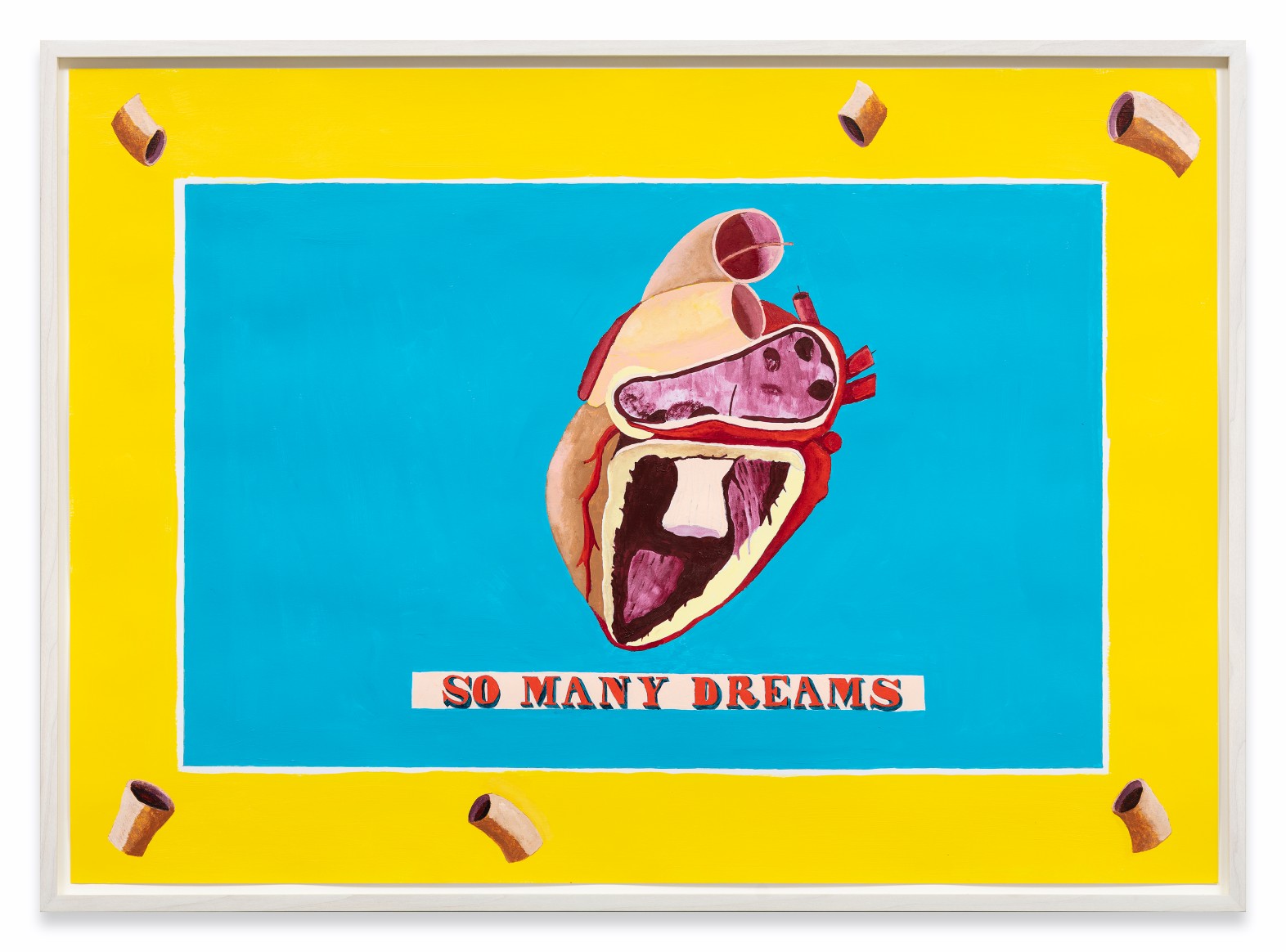Frieze
On Lubaina Himid’s ‘Our Kisses are Petals’


Lubaina Himid’s The Carrot Piece (1985), acquired by Tate in 2015, consists of two cut-out figures. On the left is a white man in bright clothing on a unicycle dangling a carrot at the end of a long stick towards the figure on the right, a black woman, her head turned back but her body leant forward, her slant pose displaying her distrust. When discussing the work, Himid said the artwork was made during a time when cultural institutions ‘needed to be seen’ to be integrating black people into their programmes, but did so through patronization, ‘cajoling, silly games and pointless offers’. The artwork makes a caricature of the quasi-liberal art world and pokes fun at its supposed status as the ‘saviour’ of black people. The explicitness of The Carrot Piece, is exemplary of Himid’s work, both in white spaces and the real world. Himid, who was born in Zanzibar in 1954 and now lives and works in Preston, northern England, has long fought for the acknowledgment of the African diaspora’s influence on British culture beyond token gestures. Whether through curation, activism, teaching, archiving or art-making, Himid has remained on a linear journey to de-imperialize institutions and amplify the overlooked work of black artists.
‘Our Kisses are Petals’, at BALTIC, Gateshead, is Himid’s first show since winning the Turner Prize and is a part of the Great Exhibition of the North. The show’s title is taken from an installation – a wall-based piece of cut-out wooden red and black serif lettering that reads, ‘Our kisses are petals, our tongues caress the bloom.’ The poetic sentence is inherently romantic, intimate and personal and are the words of Essex Hemphill – a poet and activist whose work explored his experiences within the African-American and LGBT communities. The line of poetry sits in the middle of the wall in an otherwise empty room and each acrylic painted letter boldly stands out. Pronouns are powerful words in a divisive society. Words like ‘us’, ‘them’, ‘we’ and ‘ours’ feel territorial and insular when said by the ruling class, but they can feel empowering and become a connective tissue for marginalized communities. The fact that the succeeding line of Hemphill’s poem reads ‘Who dares to tell us we are poor and powerless?’ shows that Himid’s use of this poem is more politicized than benign.
The main room of the exhibition features a selection of paintings on cloth whose colours and patterns take influence from Kanga, a versatile cotton fabric worn by East African women as head wraps and baby carriers. Kangas consist of three parts; the pindo (border), the mji (central motif) and the jini (message). Himid’s jinis feature words of Hemphill as well as Audre Lorde, James Baldwin and Sonia Sanchez. The writers who occupy the space are testament to Himid’s commitment to bring black voices into public spaces. The large cloths are hung up by an interactive system of pulleys and can be moved around by visitors into different arrangements. The intoxicating lilacs, reds and pinks signify a sense of love. The fragmented poems are in conversation with one another. They pronounce themselves, they ask questions, they softly fill the room with dialogue. Some feel like affirmations, others flirt with you. ‘Why are you looking’, when up-close, feels almost seductive.
Himid’s commitment to her community and peers is as moving and important as her body of work. ‘Our Kisses are Petals’ is a tender but deeply conscious exhibition. It subtly embodies the sentiments of a woman who has spent much of her life, tirelessly waving the flag for black art and thought, even when no-one was looking.